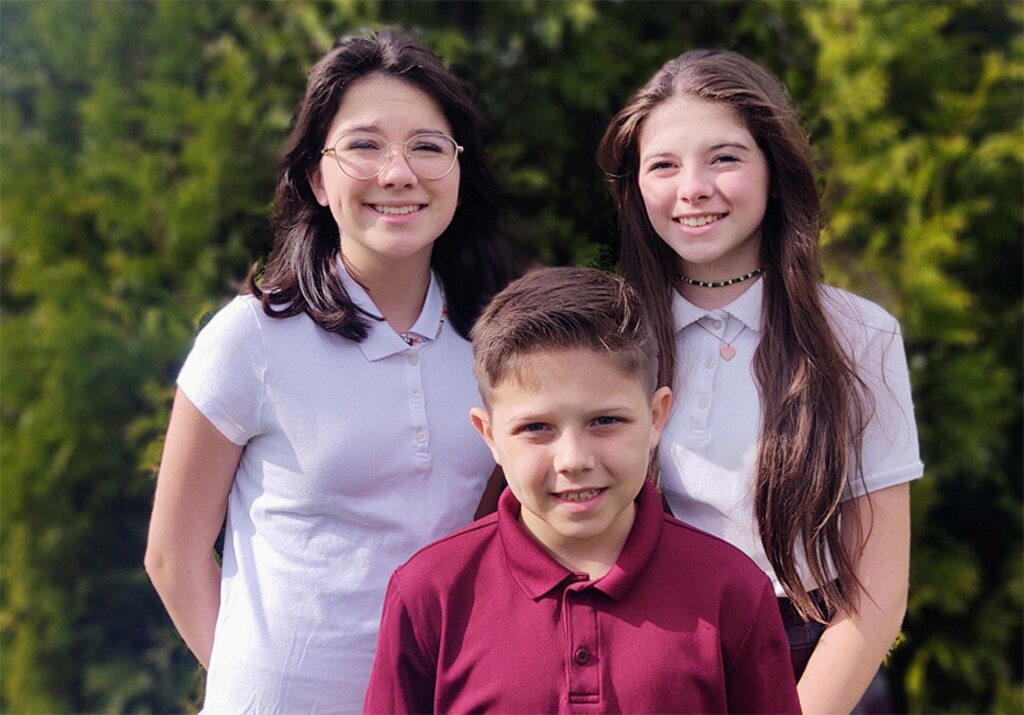Elk County (Pennsylvania) Youth and Penn Highlands Healthcare Encourage Organ Donation

Toryn Zuchowski, seems like your normal 10-year-old boy. He likes to play with his friends and twin sisters, Gwen and Morgan. He enjoys watching football and going to school. But, Toryn is not your typical boy. He has a rare disease called biliary atresia, which occurs when the bile ducts inside or outside the liver do not develop normally. Toryn is one of very few children born in Pennsylvania to have this liver abnormality. He was diagnosed shortly after his birth in June 2011 as Stage 2, out of three stages. At Stage 2, the underdeveloped ducts were not properly draining, which can lead to liver damage and cirrhosis of the liver, and can be deadly if not treated.
Toryn was enrolled in a study at UPMC Children's Hospital of Pittsburgh; and, at 8-weeks of age, the Kasia procedure was performed there. The Kasia procedure, which is usually the first treatment for biliary atresia, connects the liver to the small intestine bypassing the abnormal ducts. During the surgery, Toryn's blocked bile ducts and gallbladder were removed and replaced with a segment of his small intestine. The segment of his intestine was sewn to the liver and it functions as a new extrahepatic bile duct system. While the Kasia procedure does not cure biliary atresia, it can slow the liver damage and delay or prevent complications and the need for a liver transplant.
Over the course of the last decade, he has had multiple liver infections and suffers from cirrhosis of the liver. The disease has caused massive bleeding in his stomach from the esophageal varices he developed which resulted in extensive blood transfusions. This spring, he is scheduled to have the TIPS procedure that involves the insertion of a stent to help stop future bleeding and fluid back up and relieve the pressure of blood flowing through the diseased liver.
"Toryn doesn't know what it is like to feel good - this is the only life he knows," said his mother, Melissa Zuchowski, who is a licensed practical nurse with Penn Highlands Orthopedics and Sports Medicine, in St. Marys, Pennsylvania. "He frequently tells us that he hates being a 'sick kid' so his father and I tell him ‘see what a huge impact you can make.'"
Toryn hopes that the story of his ongoing journey will inspire others to become organ donors. Ms. Zuchowski feels fortunate that she is employed by a health system - Penn Highlands Healthcare - that advocates for the donation of organ, tissue and cornea donations.
More than 100,000 people across the nation are waiting for a life-saving transplant. Unfortunately, many people never get the chance to match with a suitable donor. Not everyone who registers as a donor is able to donate. In fact, only 3 out of every 1,000 recently deceased individuals are eligible to make a viable donation. This nationwide shortage, combined with a lengthy waitlist, causes many people to pass away while waiting for an organ donation. But you can make a difference by becoming an organ donor.
Approximately 11,000 people die annually who are considered medically suitable to donate organs, tissue and corneas, yet only a fraction donate. Anyone can be a potential donor regardless of age, race or medical history.
The Center for Organ Recovery & Education (CORE) is one of 57 federally designated not-for-profit organ procurement organizations in the United States. CORE partners with more than 150 hospitals and health care facilities to deliver the gift of life by coordinating the surgical recovery of organs, tissues and corneas for transplantation. CORE also facilitates the computerized matching of donated organs, tissues and corneas. To become a donor, visit the www.core.org/register. After you sign up, you should tell your family about your decision so that if the time comes, they won't feel surprised and can help you carry out your wishes.
Because there is an organ shortage and patients waiting for a liver may die or become too sick to undergo a transplant, living donor liver transplantation is an important option for many people on the waiting list. Finding a living donor from a healthy adult (relative, friend or altruistic donor) shortens the waiting time, increases long-term transplant success and frees up a liver for a patient on the waiting list who does not have this option. In living donor liver transplantation a portion of a donor's healthy liver is transplanted into a recipient in need. Living donor liver transplantation is possible because the liver, unlike any other organ in the body, has the ability to regenerate (regrow). Most regeneration of both the donor's and recipient's livers occurs within the first 8 weeks. For more information about liver disease, living donation and organ transplantation, visit the United Network for Organ Sharing at www.unos.org.
